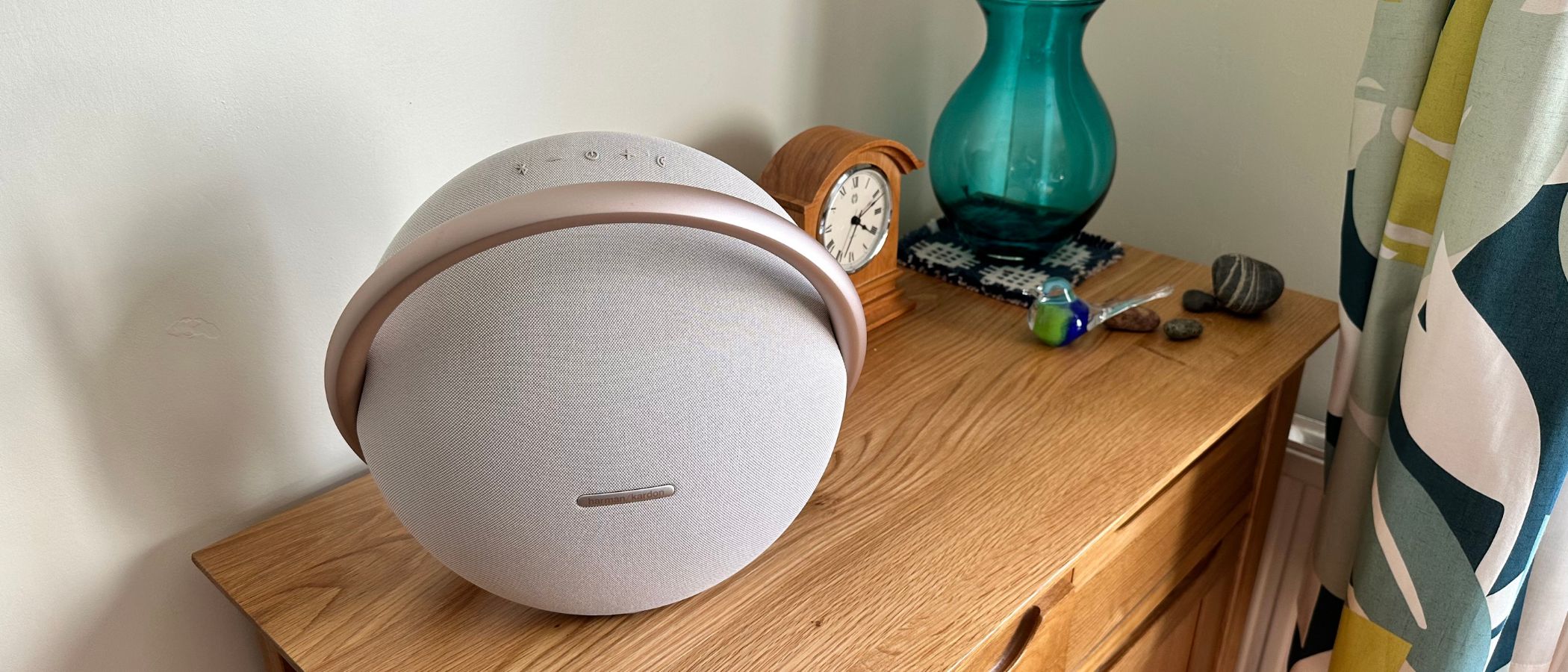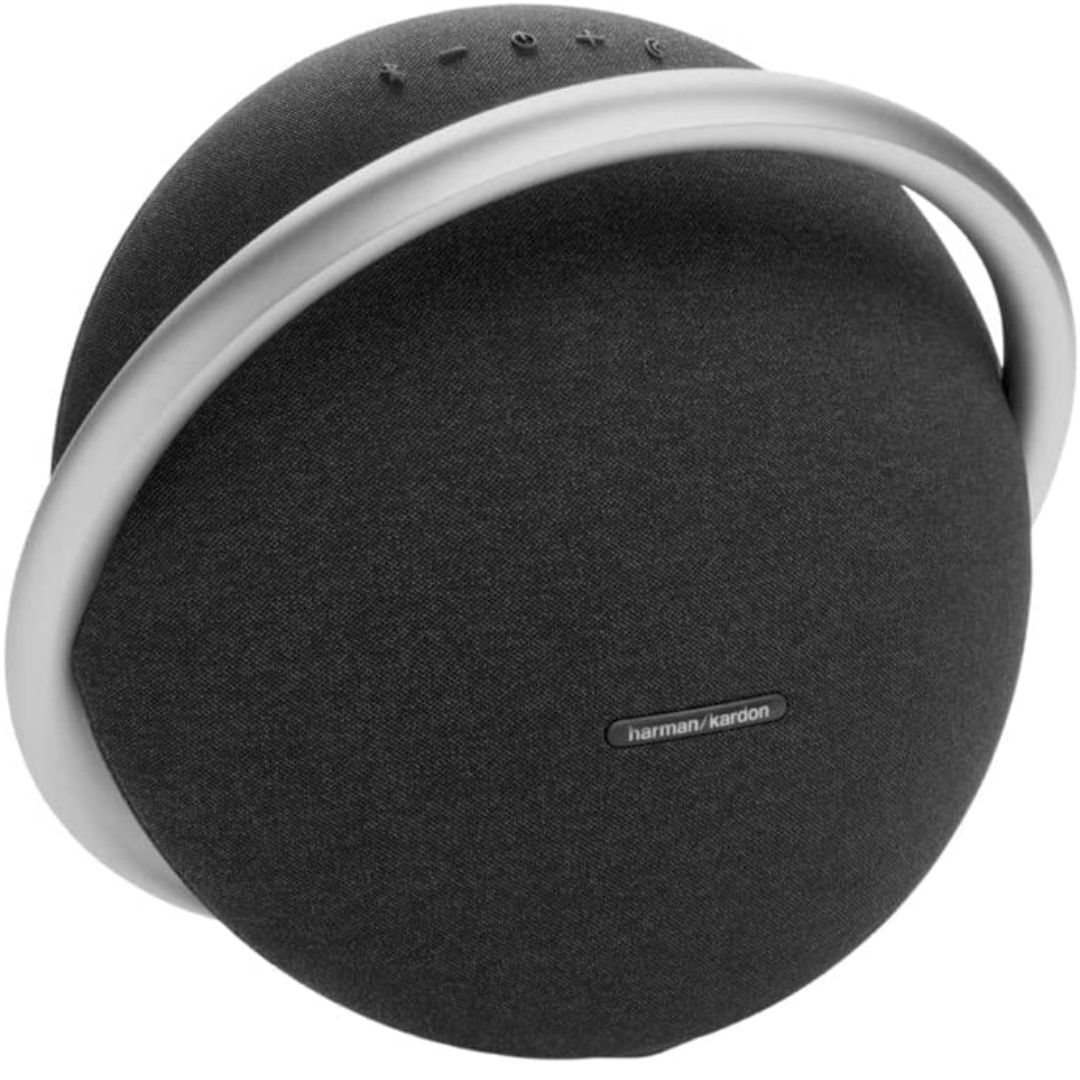iMore Verdict
The Harman Kardon Onyx 8 is a solid speaker, but beyond its design, it doesn't really do anything to stand out in a sea of quality Bluetooth speakers.
Pros
- +
Looks like a sculpture
- +
Solid build
- +
Thick, weighty sound
Cons
- -
It’s very, very heavy
- -
Perhaps too bassy
- -
Battery life is less than stellar
You can always trust iMore.
There’s a certain look to Bluetooth speakers that pervades product pages everywhere. You know the kind of thing: A long beer can covered with fabric, with a couple of buttons placed across the top. Sometimes there’s even a lanyard so that you can strap it to a bag. They all look like this – with a couple of exceptions.
The Harman Kardon Onyx 8 could never be pegged with looking like everything else. Like a weird, flat planet, the large portable Bluetooth speaker becomes a centerpiece of almost any space you put it in, showing up all your other decorations with its otherworldly presence. But does it sound any good?
Harman Kardon Onyx 8: Price and availability
You can pick up a Harman Kardon Onyx 8 for $299/£279, a relatively high price for a Bluetooth speaker of any size. This one happens to be slightly larger, but that price is still a sticking point. Especially when the likes of the UE MegaBoom 2, a similarly sized Bluetooth speaker, is available for $199/£169.
You’ll be able to find one at all the major outlets, including Amazon and the Harman website.
Harman Kardon Onyx 8: What I liked
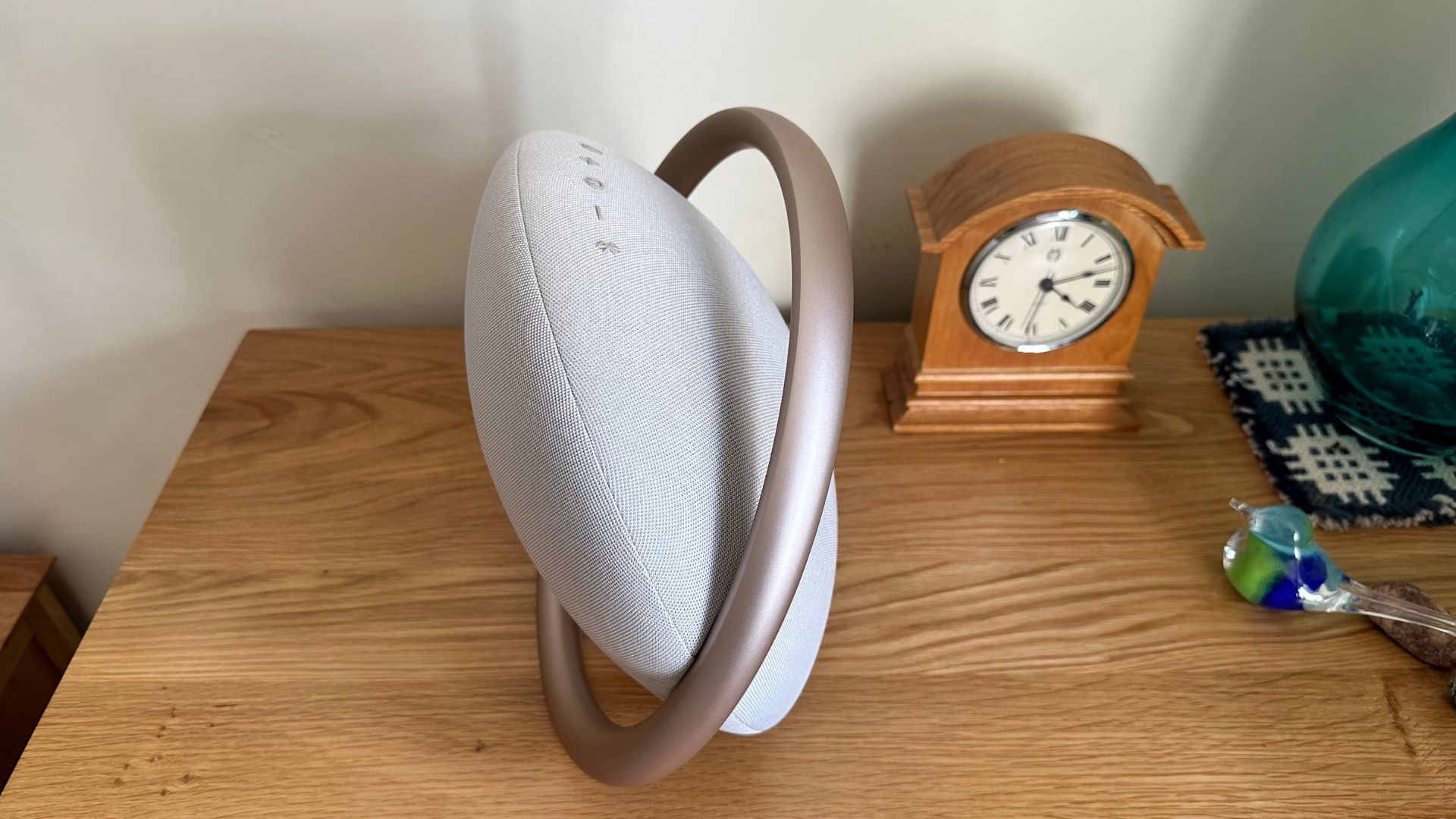
The speaker looks undeniably interesting: I’d say it looks cool, although its weird flat-planet design is going to be divisive for many. That main planet area houses all the speakers and Bluetooth gubbins, while the circumferential ring doubles as a kind of handle and stands for the oddly shaped speaker. Despite the fact that it doesn’t have loads of contact with whatever surface it’s sat on, it doesn’t feel wobbly, with most of the weight towards the bottom of the device.
Harman Kardon has popped a 120mm woofer in there, and two 20mm tweeters to make for what it calls ‘Superior sound performance’.
Come back around to the main planet area of the speaker, and we’ll take a quick look at what’s inside. Harman Kardon has popped a 120mm woofer in there, and two 20mm tweeters to make for what it calls ‘Superior sound performance’. I’ll be the judge of that, thank you very much.
Yeah, it’s fine. It’s not my favorite kind of tuning, with a massive emphasis on the lower register, but it’s pretty good. If nothing else, it makes the speaker sound very ‘big’, letting it fill a pretty good room. The mids are pleasant and wide, and the top end is certainly present.
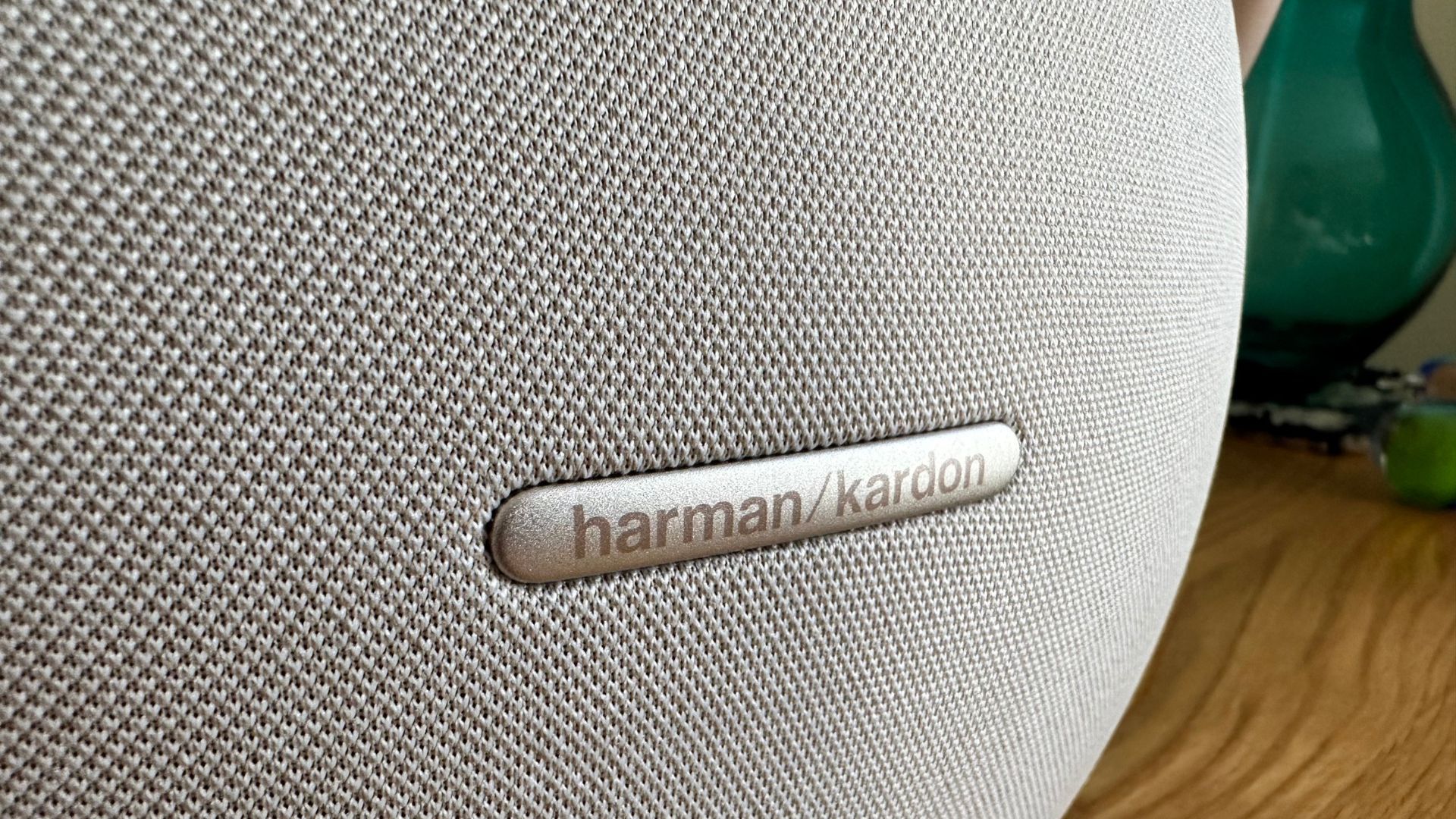
Spinning up Dua Lipa’s Hallucinate, and you’ll be bopping along in no time. The synth bass is well-defined, with plenty of low stuff to keep things moving on. Lipa’s vocals are perfectly replicated, and the sound widens as the track progresses.
That's perhaps the biggest strength of the sound - the soundstage is remarkably wide. It’s not to the level of something with dedicated Spatial Audio, or a pair of stereo speakers, but when properly situated it’s got plenty of space to the sound. It couldn’t be called open and airy by any stretch of the imagination - it’s more like being in a sweaty club.
It excels in the upper and mid-bass, pumping out plenty of thump.
The perfect example of this is Charlotte De Witte’s Doppler which is perhaps the best way to see how the speaker reacts to something truly low. It excels in the upper and mid-bass, pumping out plenty of thump. The Formula car in the intro and throughout the track zooms from one side of the stage to the other, and there’s a surprising presence in the sub-bass that I wasn’t expecting. It’s not big speaker level, but it’s impressive nonetheless.
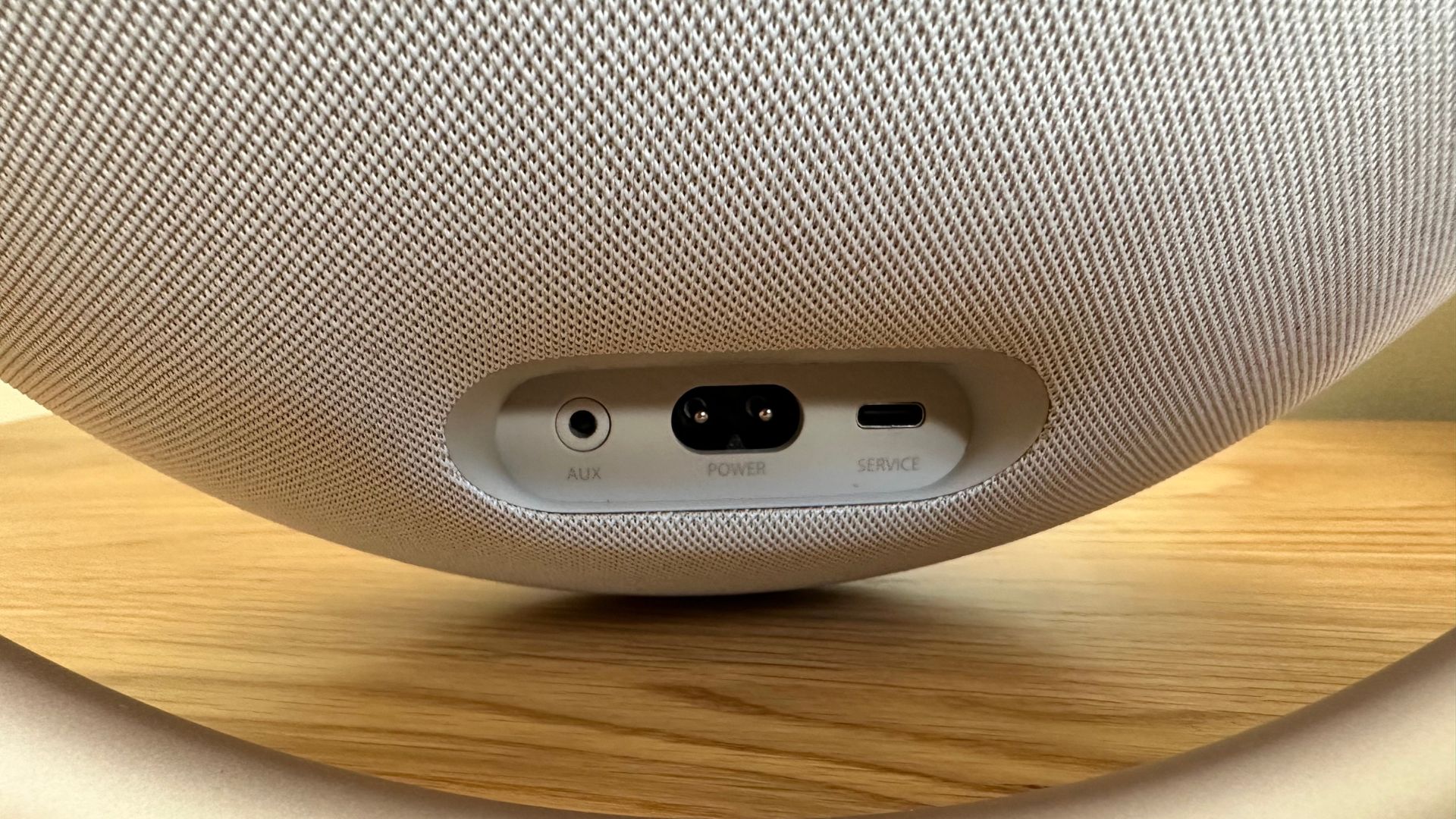
The speaker charges over a figure 8 socket, which is… weird. There is a USB-C port alongside for connecting up devices and a 3.5mm headphone jack for the same.
Harman Kardon Onyx 8: What I didn’t like
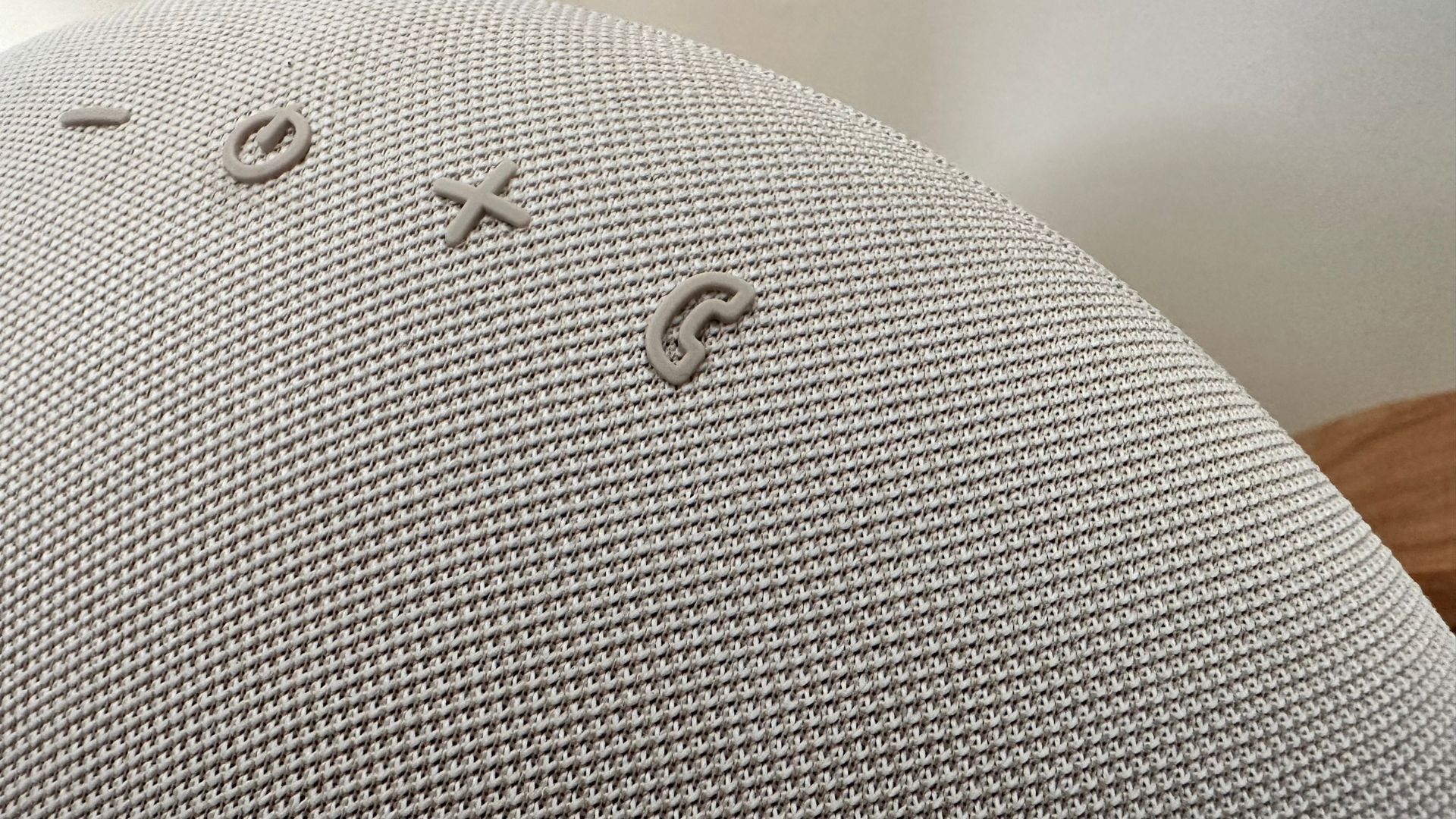
There’s a lot of mid bass, and in some tracks that means the upper mids and the highs can be drowned out. On the note of those highs, they lack a certain amount of detail, and can sound a little washed out. When listening to something that needs more articulation, such as Sylvaine's Nowhere, Still Somewhere, the upper limits of Shepard's vocal lines are lost in a great sea of bass and lower mids. Lead guitars struggle to make an impact as well, and drum cymbals melt into a great mire of mixed cacophonous high parts.
The bass is a particular problem in rock and metal. It emphasizes the bass frequencies in the guitars and the bass, and leads to a boominess that detracts from the experience. It says that it will ‘tune itself to the room it’s in’ but given there seems to be no setup or on/off button to this function, it feels more like marketing language.

Finally, the battery life is sub-par. It takes 5 hours to charge, and it will only last 8 hours when filled with juice. I didn’t even get that – the best I could get from it was 6 hours, and that was listening to jazz at mid-volume. That’s not spectacular, and you can expect that to go down when you crank the volume.
Harman Kardon Onyx 8: Competition
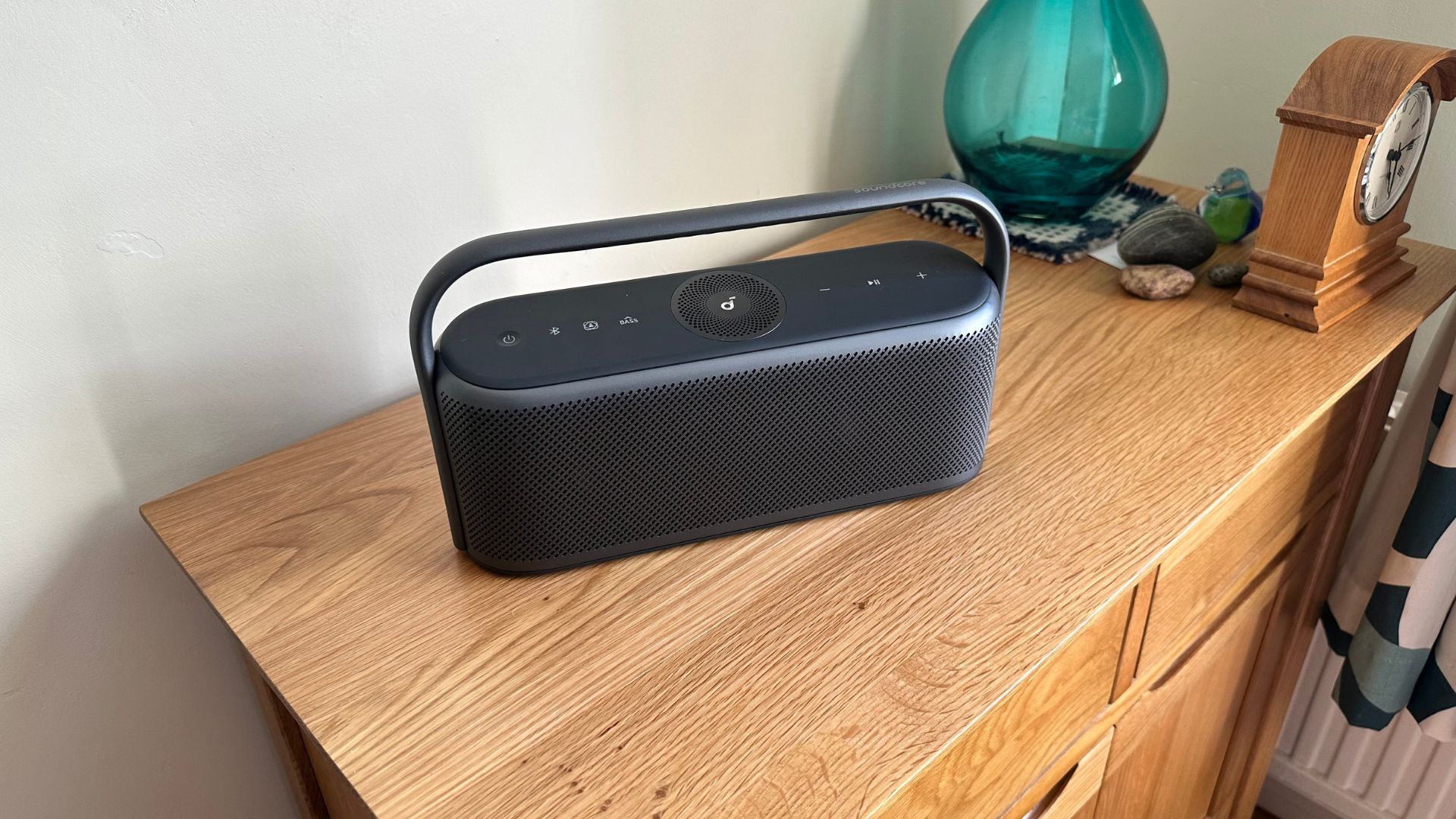
The Soundcore Motion X600 features Spatial Audio, a sleek, retro design, and sounds really, really good for $80 less. It doesn’t have quite the same kick to it like the Onyx 8 and it’s perhaps a little less interesting looking, but it’s still an excellent option over the Onyx. And it's got spatial audio – a rarity in Bluetooth speakers.
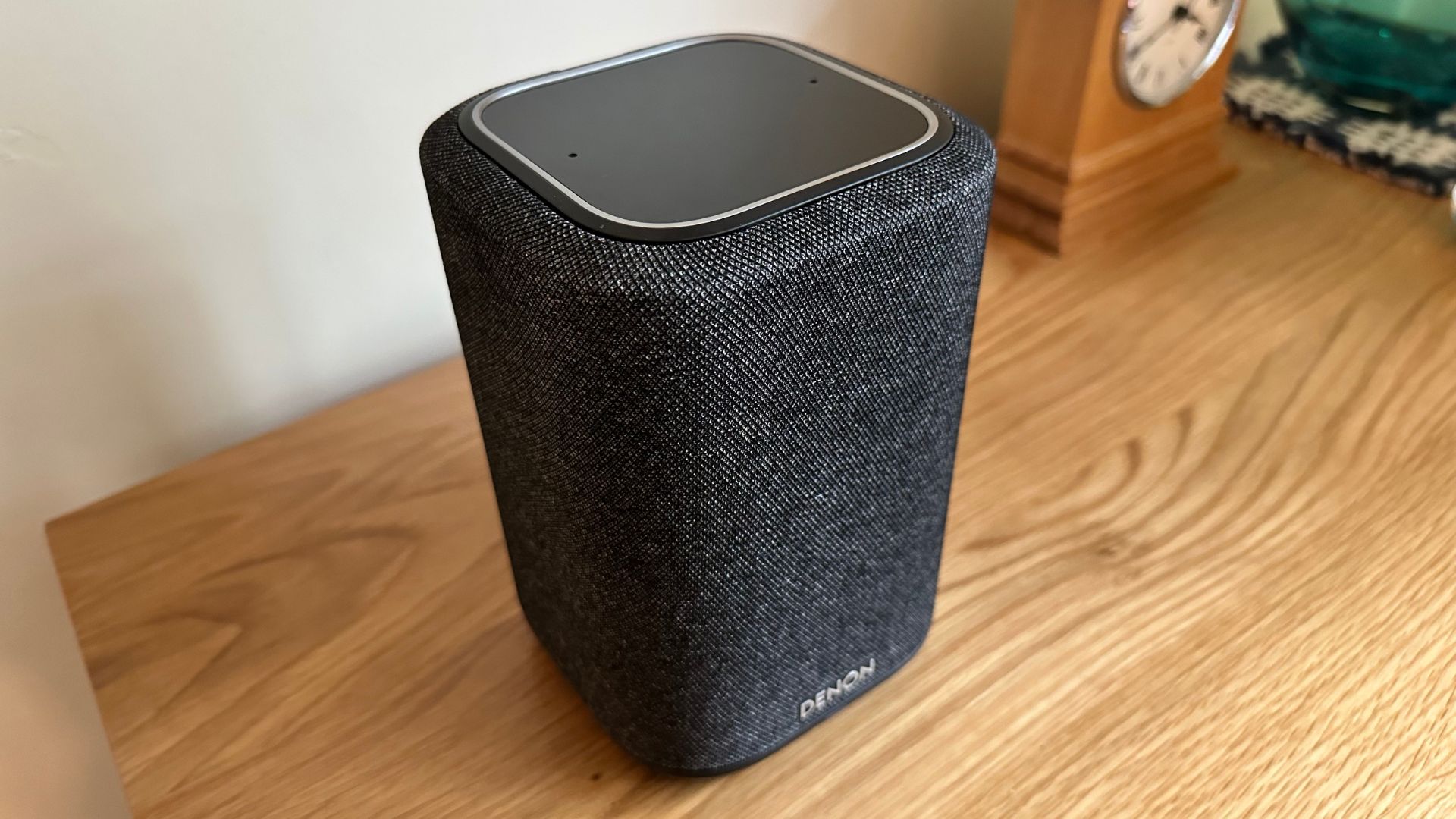
Similarly, for $20 less you can get the Denon Home 150, which sounds better. It needs to stay plugged into a wall, but it's also an internet speaker so you can listen to music with AirPlay as well.
Harman Kardon Onyx 8: Should you buy this?
You should buy this if:
- You like trance and dance music
- You love the design
- You want something built really well
You shouldn’t buy this if:
- You don’t like too much bass
- You need good battery life
- You want something under $200
Harman Kardon Onyx 8: Verdict
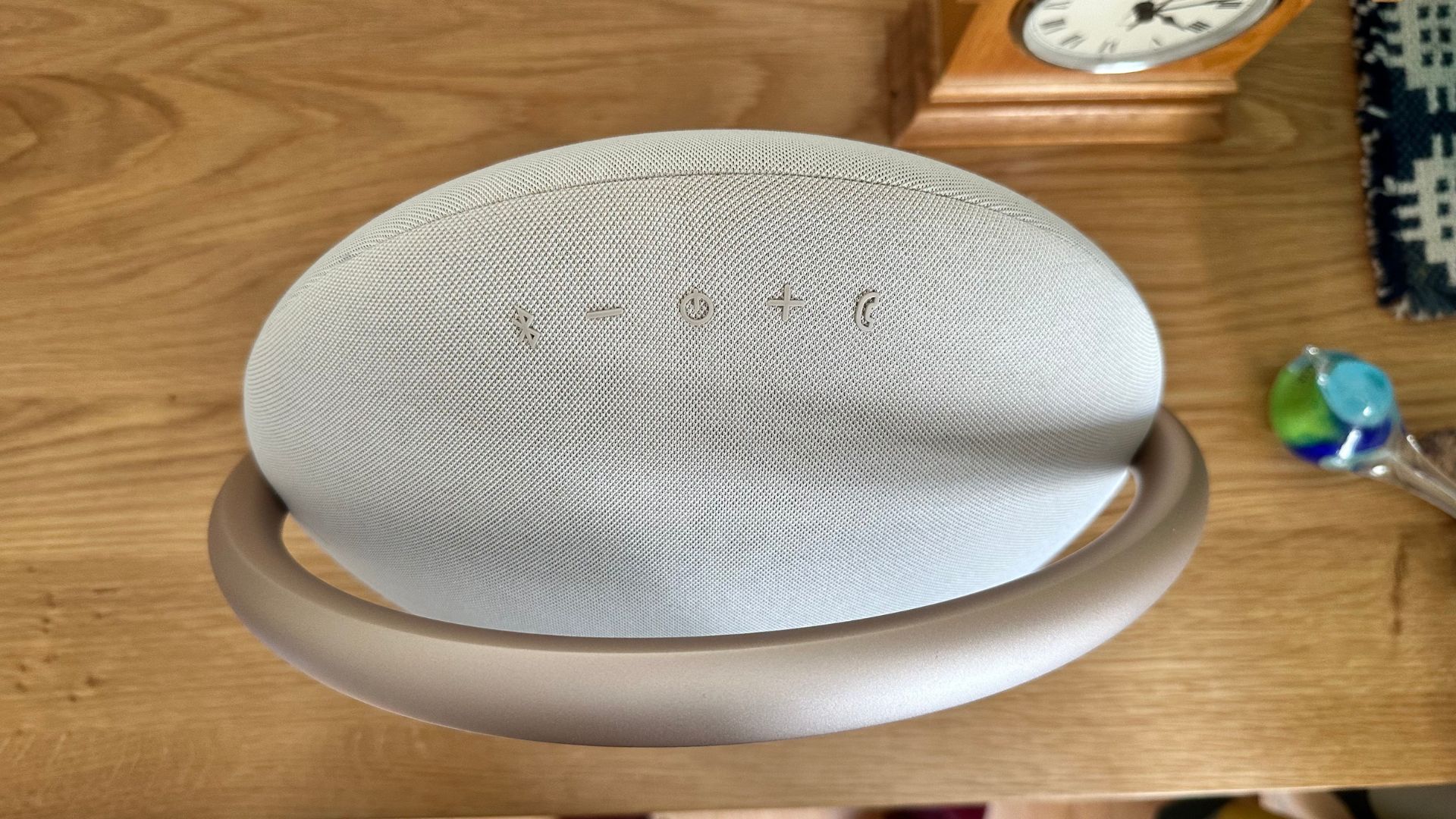
The Harman Kardon Onyx is not a bad speaker by any stretch of the imagination. It's got incredibly solid bass, an interesting design, and feels well put together. But there are other options out there that might make for better speakers in and around the house, with more battery life and more refined sound signatures.

As iMore's Senior Staff writer, Tammy uses her background in audio and Masters in screenwriting to pen engaging product reviews and informative buying guides. The resident audiophile (or audio weirdo), she's got an eye for detail and a love of top-quality sound. Apple is her bread and butter, with attention on HomeKit and Apple iPhone and Mac hardware. You won't find her far away from a keyboard even outside of working at iMore – in her spare time, she spends her free time writing feature-length and TV screenplays. Also known to enjoy driving digital cars around virtual circuits, to varying degrees of success. Just don't ask her about AirPods Max - you probably won't like her answer.
